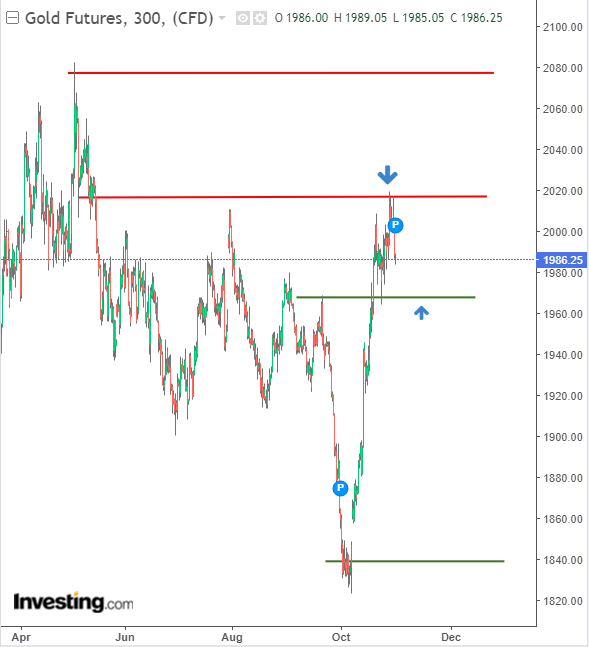- Global risk aversion due to Gaza conflict has driven up gold prices
- But is it finally the start of a much-awaited gold bull market or a temporary spike?
- $2,000 area has once again proven to be a key resistance
The recent surge in gold price is emblematic of its enduring status as a safe-haven asset, consistently bolstered by investor confidence. The catalyst behind this surge is the ongoing conflict in the Gaza Strip, which has escalated into a ground invasion by Israeli forces.
Despite this spike, it's premature to herald a new bull market for gold. Macroeconomic factors are poised to temper the buying enthusiasm, especially as gold encounters stiff resistance at $2,000 per ounce.
Anticipating a Gold Bull Market
The recent upswing in gold prices has reignited conversations about a potential bull market. However, given the current phase of the business cycle and the Fed's prevailing policies, the path to new highs might still be distant.
Notably, the backdrop of elevated interest rates and robust US Treasury bond yields does not favor bullish sentiment. With upbeat US economic data and slowing disinflation, the Fed's hawkish stance is likely to endure for the foreseeable future.
We can look for analogies to the current situation with the beginning of the Ukraine-Russia war, when it seemed that on the wave of capital flight to the "safe haven" gold would quietly form new historical maxima above $2100 per ounce.
However, this did not happen and we remained in consolidation, as in the medium and long term the Federal Reserve's monetary policy is the decisive factor.
Therefore, patience should be maintained, and unless there is a violent escalation involving other countries in the region, then we will have to wait for a new bull rally.
Technical View: The $2000 Area Has Remained a Major Barrier
Since the escalation of the conflict in the Middle East, the price of gold has freely pursued a northerly direction, while defending an important support area at around $1830 per ounce.
Buyers encountered their first problems in the area of the psychological barrier of $2,000, where sellers' resistance is still evident.

The recent strong downward reaction does not bode well for a potential breakout of the indicated level, which would open the way for an attack on the area around $2080 per ounce.
Post the Fed decision, we witnessed a bearish reaction from the yellow metal. Now, the first target near local support falls in the area of $1970 per ounce.
***
Disclaimer: This article is written for informational purposes only; it does not constitute a solicitation, offer, advice, or recommendation to invest as such it is not intended to incentivize the purchase of assets in any way. I would like to remind you that any type of asset, is evaluated from multiple points of view and is highly risky and therefore, any investment decision and the associated risk remains with the investor.

